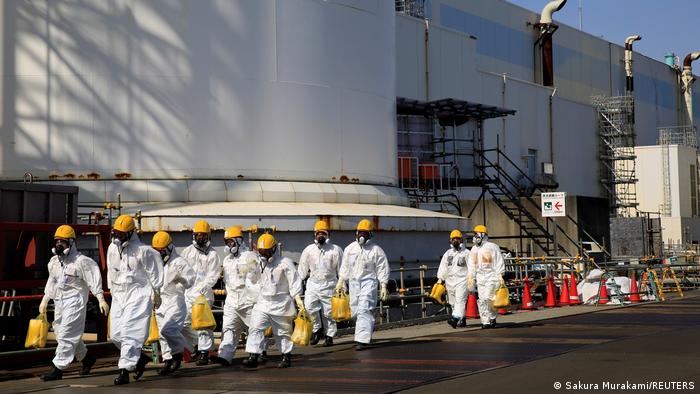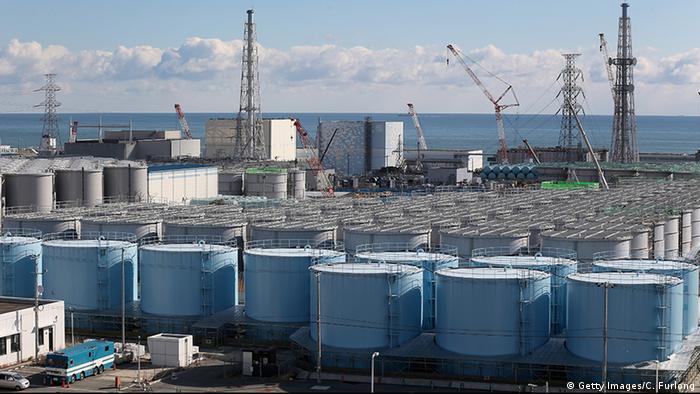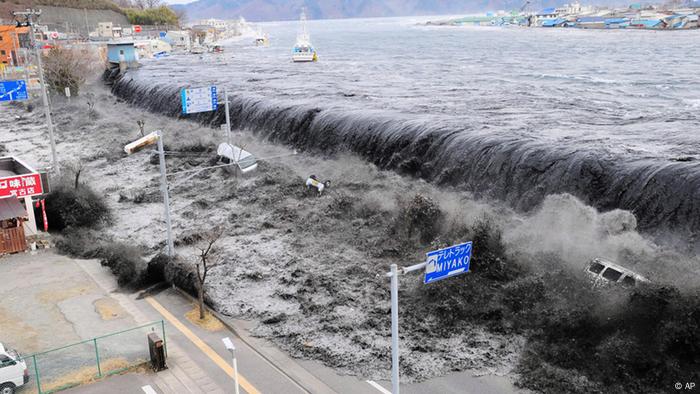Fukushima: Japan attempts to safely remove nuclear fuel from crippled reactors
More than a decade after the second-worst nuclear disaster in history, engineers want to construct a huge water-filled tank around one of the damaged reactors and carry out underwater dismantling work.

The proposal would permit experts to deploy robots to more closely examine
the condition of the crippled reactor
Nuclear experts pondering the safest way to decommission the three crippled reactors at the Fukushima Daiichi atomic energy plant have devised a new plan to recover highly radioactive debris at the site, with even anti-nuclear campaigners giving the proposal their qualified support.
They warn, however, that the situation at the plant — on the northeast coast of Japan— remains precarious more than a decade since three of the six reactors suffered meltdowns after an offshore earthquake of magnitude 9 triggered a series of powerful tsunamis.
In their latest annual strategy report on progress at the plant, experts at the Nuclear Damage Compensation and Decommissioning Facilitation Office (NDF) have proposed the construction and filling with water of a massive concrete tank to completely enclose one of the reactor buildings.
The water would act as a shield to prevent radiation from escaping into the surrounding environment and give engineers more space, in which to operate heavy equipment to dismantle and remove the outer shell of the reactor building.

NDF experts plan to construct a massive concrete tank arond one of the reactor buildings
That, in turn, would permit experts to deploy robots to more closely examine the condition of the reactor, as well as the fuel that has escaped and pooled in the building's basement levels.
The plan was presented to the government at a meeting in Iwaki, just south of the plant, in early September, during which NDF President Hajimu Yamana explained the benefits.
Safe from radioactivity
"No radioactive materials would be swirling up underwater, so there would be almost zero impact on the outside," Yamana told the Asahi newspaper.
He emphasized, however, that the proposal was in the initial stages and no final decision had been taken. If it worked, however, then the same strategy could be deployed to help in the decommissioning of the remaining two damaged reactors at the facility.
"I cannot say anything for sure yet," Yamana said. "We are still in the very, very early stages of the concept study. There are still a lot of things to study as the attempt would be the first of its kind in the world."
Hajime Matsukubo, secretary-general of the Tokyo-based Citizens' Nuclear Information Center, remains a vocal critic of the Japanese government's insistence on the need for atomic energy, but agreed that the NDF plan appeared to offer a number of benefits for the decommissioning process.
"The work cannot go ahead without the water shield because it would expose workers to dangerously high levels of radiation so this idea for the construction of a tank around one of the reactors is positive," he told DW.
"But that does not mean that I am not concerned," he said. "It will be very difficult to construct this tank, to make sure it does not leak, and it will be very expensive and take more time, of course."

ARTISTS REFLECT ON THE FUKUSHIMA DISASTER AFTER 10 YEARS
'Artists and the Disaster: Imagining in the 10th Year'
By organizing the exhibition "Artists and the Disaster: Imagining in the 10th Year," the art center in the city of Mito (photo), which suffered damage from the earthquake of 2011, looked back on the catastrophe after one decade through the eyes of Japanese artists.
12345678
Another earthquake
Another concern that has been a constant since the March 2011 disaster is the possibility of another major earthquake or tsunami damaging the tank and potentially exposing radioactive debris to the air.
"We have already seen what long-term exposure to salt water at the site does to metal and other materials, and if there was another major tremor then that could very easily affect the tank and even see it collapse," Matsukubo said. "To me, that is the biggest worry."
He also questioned why it had taken the Tokyo Electric Power Company (TEPCO), decommissioning experts, the government and Japan's nuclear regulators more than a decade to think up the plan. It is likely that the delay will further extend the schedule and total cost of rendering the site safe.
Government estimates put the cost of decommissioning at 8 trillion yen (€56 billion, $55.3 billion), although that figure may increase if new complications crop up, while the work will probably continue for another 30 years.
Kazuto Suzuki, a professor of science and technology policy at Tokyo University, agreed that the new approach to the decommissioning of the reactors "seems to be a good one, but the problem will be in the execution."
"I'm not an expert, but I can see problems with leaks — as they have already experienced from the tanks holding contaminated water at the site — and then that water escaping into the sea," he said. "This is a really big issue for the people still living in the region and they have to be able to guarantee a safe level of water within the tank surrounding the reactor."

Thousands died in 2011 when a tsunami swept inland and led to a meltdown
at the Fukushima nuclear power plant
Seismic concerns
There are also concerns about the stability of the ground that the tank will stand on due to the immense weight it will have to bear, Suzuki pointed out.
He was less worried, however, about the possibility of another earthquake wreaking further havoc at the site.
"Concern about another earthquake is legitimate, but we have to remember that the original damage to the Fukushima plant was almost entirely the result of the tsunami, not the earthquake," he said.
"I actually believe that Japan can be quite proud of the sophisticated anti-seismic technology that is incorporated into all buildings here, but especially our nuclear plants," Suzuki said.
"I am confident that thanks to the lessons we have learned at Fukushima already, the impact of another earthquake on the walls of a tank around a reactor would be factored into the construction process."
Edited by: Keith Walker
No comments:
Post a Comment